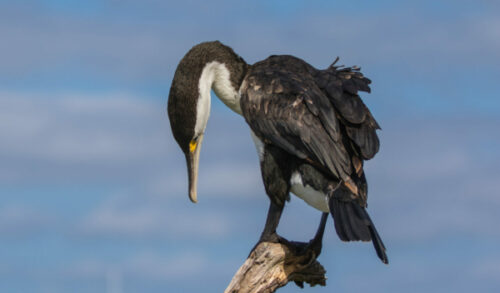
- By Laura Kvigstad, Auckland Council reporter, and Zoe Garden
Funded by New Zealand on Air
An Auckland councillor is calling for stronger protections for bird species in the Panmure Basin.
At the council’s environment and climate change committee meeting on July 7 a notice of motion was passed allowing councillor Josephine Bartley to advocate for full fishing ban in the basin to protect shags.
Bartley was initially looking for council controls to protect the species but was told by council staff the issue was out of council’s hands.
Bartley said limited food sources and fish hooks being caught in shags’ necks was leading to a decline in their numbers.
“Anything is better than the status quo,” she said.
Corina Hooper, who feeds the shags in Panmure Basin daily, spoke to the committee.
“Birds are not getting to breeding age … adult (shags) have a huge amount of pressure to find food that is already scarce,” Hooper said.
“The colony is definity in trouble.”
Howick ward councillor Sharon Stewart called attention to Auckland Harbour Bridge pouring light into the basin.
“Are you aware that breeding of shags is disrupted because of the blue light?” she asked Hooper.
Hooper confirmed the light had impacted the shags.
“Some of the birds are moving further down the estuary because of the light. They are being hit from all sides,” Hooper said.
“Every bird needs to get rest. If you’ve got constant light on them it is not a natural environment.”
Council chief of strategy Megan Tyler said while the council did not have the tools to protect the species, iwi implementing a rahui could be a solution.
Bartley was encouraged to advocate to both iwi and Crown agencies with the help of council staff.
Birds dying from hooks
Local bird expert Shaun Lee and Tamaki Estuary Environmental Forum co-chair Bruce Kendall observed three or four red-billed gulls under the Panmure Bridge that had died as a result of getting hooked and tangled at the bridge.
“There must be many more,” Kendall says.
Kendall has recently posted several pictures online of autopsies and x-rays of shags with fish hooks inside them.
“I’ve seen they are pretty determined to get bait on hooks or small fish on hooks.”
He notes the proposed fishing ban may be a good step toward helping the shags, but this only helps at hide tide.
“The lagoon completely drains at low tide and so the shags are still at risk from middle tide through low tide for the rest of the Tamaki Estuary.”
Lee said the council has a new responsibility to protect indigenous biodiversity from the effects of fishing.
“It is sensible to ban fishing near seabirds, especially juvenile sea birds that are learning to forage.”
Lee agrees with Kendall the ban should be extended to the Tarapunga / Red-billed Gull colony.









